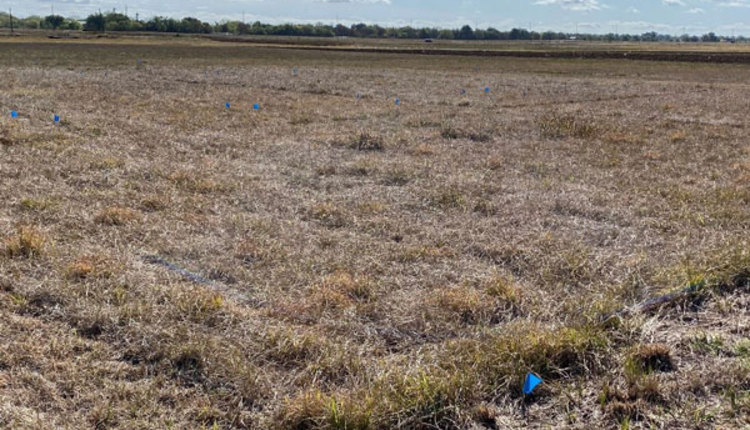Some fescue pastures are damaged or dead |
| By Mike Rankin, Managing Editor |
|
|
 Photo: Bruno Pedreira Widespread drought in the western Fescue Belt caused significant damage or death to tall fescue pastures, according to Bruno Pedreira and Dale Helwig, an area agronomist and extension agent, respectively, with Kansas State University. They wrote about the issue in a recent Agronomy eUpdates newsletter. If fescue pastures or hayfields are damaged, there is not much to be done during the winter, but the Kansas State specialists recommend that a plan be developed for the spring. “In some places, after a few rainfall events in early fall, the fescue was greening up and looked to be in good condition, but in some places, this is not the case, and many producers are concerned,” the authors shared. In drier regions, tall fescue generally establishes better in the fall than the spring because it takes time for the plant to develop a root system that will be able to withstand the dry summer period. If fescue is planted in the spring, Pedreira and Helwig recommend not to cut it for hay the first season and exercise caution if it is grazed. They say to leave a minimum of 4 inches of stubble height if grazed and move the livestock through the new seedings fairly quickly. This will give plants time to recover before a dry summer. Several options exist It will take time to determine if existing fescue pastures are damaged or not. So, another approach may be to consider different forage options for spring and summer, and then replant the fescue in the fall when it is more suited for establishment. One option is to drill oats into fescue pastures during February. “Oats grow quickly and may be ready for grazing in late March or at least by mid-April,” the author pair suggest. “If the fescue is really damaged, oats may be a forage option for the livestock to graze or it may be baled for hay.” After grazing or haying the oats, a warm-season annual such as pearl millet or sudangrass can be seeded for summer hay or grazing. If fescue appears dead or nearly so next spring, this may offer an opportunity to establish a warm-season grass such as crabgrass or bermudagrass. They have a fairly quick establishment if a seeded variety is chosen. Fescue can then be no-tilled into the field next fall. “Fescue and crabgrass work well together if managed correctly,” the authors assert. “In a recent trial carried out in Cherokee County, Kan., crabgrass yielded from 1,700 to 7,600 pounds of dry matter per acre during the growing season, depending on the fertilizer application. This will provide extended grazing throughout the year,” they added. Go novel If a pasture needs to be reseeded, this offers an opportunity to establish a novel endophyte tall fescue variety using the spray-smother-spray method as follows: 1. Use a burndown herbicide such as glyphosate in early March. 2. Plant a summer annual. Soybeans would offer control of many types of unwanted grasses and weeds throughout the summer. Soybeans could be harvested as a grain crop or as high-quality hay. Other options are sudangrass, pearl millet, crabgrass, or other summer annuals. 3. Spray a burndown herbicide in mid-August or early September and plant the novel fescue. In a grazing situation, novel tall fescue has shown to have a tremendous advantage over Kentucky-31 for cattle performance and weight gain. |
